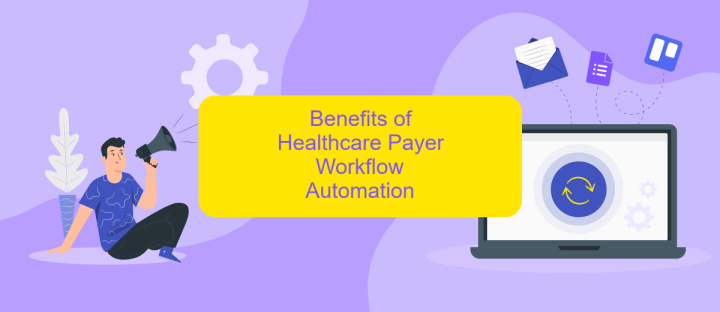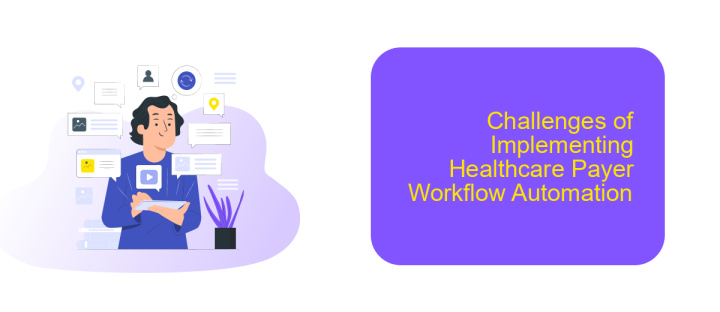Healthcare Payer Workflow Automation
In the rapidly evolving landscape of healthcare, payer workflow automation has emerged as a critical innovation. By streamlining administrative processes, reducing human error, and enhancing data accuracy, automation not only improves operational efficiency but also ensures better patient outcomes. This article explores the transformative impact of automation on healthcare payers, highlighting key benefits and implementation strategies.
Introduction
The healthcare industry is undergoing a significant transformation with the integration of advanced technologies aimed at improving efficiency and patient care. One of the key areas where automation is making a substantial impact is in payer workflows. By automating routine and repetitive tasks, healthcare payers can reduce administrative burdens, minimize errors, and ensure timely processing of claims and payments.
- Streamlined claims processing
- Enhanced data accuracy
- Improved compliance and reporting
- Cost reduction
- Better resource allocation
To achieve these benefits, healthcare payers are increasingly leveraging integration services like ApiX-Drive. This platform facilitates seamless data exchange between different systems, ensuring that all relevant information is accurately and promptly shared. By automating data workflows and integrating various healthcare applications, ApiX-Drive helps organizations optimize their operations, leading to improved efficiency and better patient outcomes.
Automating Healthcare Payer Processes

Automating healthcare payer processes can significantly enhance operational efficiency and reduce administrative burdens. By leveraging advanced technologies such as robotic process automation (RPA) and artificial intelligence (AI), payers can streamline tasks like claims processing, eligibility verification, and billing. Automation not only accelerates these processes but also minimizes human errors, leading to improved accuracy and faster turnaround times. This transformation allows healthcare payers to focus more on patient care and less on administrative tasks, ultimately improving the overall healthcare experience.
Integrating various healthcare systems is crucial for seamless automation. Tools like ApiX-Drive facilitate the integration of disparate systems without the need for extensive coding knowledge. ApiX-Drive allows healthcare payers to connect their existing software solutions, enabling data to flow smoothly between different platforms. This integration ensures that automated processes are well-coordinated and that data is consistently accurate and up-to-date. By using ApiX-Drive, healthcare payers can achieve a more cohesive and efficient workflow, further enhancing their ability to deliver timely and accurate services.
Benefits of Healthcare Payer Workflow Automation

Healthcare payer workflow automation offers numerous advantages that significantly enhance operational efficiency and service quality. By automating repetitive tasks, healthcare payers can focus on more strategic activities, improving overall productivity and reducing the likelihood of human error.
- Cost Reduction: Automation minimizes the need for manual labor, leading to substantial cost savings.
- Improved Accuracy: Automated systems reduce errors in claims processing and data entry, ensuring higher accuracy.
- Faster Processing: Workflow automation accelerates the processing of claims and other administrative tasks, resulting in quicker turnaround times.
- Enhanced Compliance: Automation ensures that all processes adhere to regulatory standards, reducing the risk of non-compliance.
- Better Integration: Services like ApiX-Drive facilitate seamless integration between various systems, streamlining data flow and communication.
In conclusion, the adoption of healthcare payer workflow automation provides a strategic advantage by cutting costs, improving accuracy, and ensuring compliance. By leveraging tools like ApiX-Drive, organizations can achieve seamless integration, further enhancing operational efficiency and service delivery.
Challenges of Implementing Healthcare Payer Workflow Automation

Implementing healthcare payer workflow automation presents several challenges that organizations must navigate to achieve efficiency and effectiveness. One of the primary obstacles is the complexity of integrating diverse systems and data sources. Healthcare payers often rely on a myriad of legacy systems that are not inherently designed to communicate with each other, making seamless integration a daunting task.
Another significant challenge is ensuring data accuracy and consistency across automated workflows. Inaccurate data can lead to errors in claims processing, patient records, and financial transactions, which can have serious repercussions. Additionally, maintaining compliance with regulatory standards such as HIPAA adds another layer of complexity to the automation process.
- Integration of disparate systems and data sources
- Ensuring data accuracy and consistency
- Maintaining regulatory compliance
- Managing change and user adoption
Tools like ApiX-Drive can facilitate the integration process by providing a platform that connects various applications and automates data transfer between them. This can help healthcare payers overcome some of the integration challenges and streamline their workflows. However, it is crucial to carefully plan and manage the implementation process to ensure that all potential issues are addressed effectively.


Future Trends in Healthcare Payer Workflow Automation
The future of healthcare payer workflow automation is poised for significant advancements driven by artificial intelligence and machine learning. These technologies will enable real-time data processing and predictive analytics, allowing payers to make more informed decisions and streamline operations. Automation tools will increasingly integrate with electronic health records (EHRs) and other healthcare IT systems, facilitating seamless data exchange and reducing administrative burdens.
Moreover, the rise of integration platforms like ApiX-Drive will play a crucial role in this evolution. ApiX-Drive allows for easy and efficient integration of various healthcare applications, ensuring that data flows smoothly between disparate systems. This will enhance the accuracy and speed of claims processing, member management, and compliance monitoring. As these technologies continue to evolve, we can expect a more efficient, transparent, and patient-centric healthcare payer ecosystem.
FAQ
What is Healthcare Payer Workflow Automation?
How can Healthcare Payer Workflow Automation benefit my organization?
What processes can be automated in a healthcare payer organization?
How do I integrate automation tools into my existing systems?
Is it difficult to implement workflow automation in a healthcare payer setting?
Time is the most valuable resource in today's business realities. By eliminating the routine from work processes, you will get more opportunities to implement the most daring plans and ideas. Choose – you can continue to waste time, money and nerves on inefficient solutions, or you can use ApiX-Drive, automating work processes and achieving results with minimal investment of money, effort and human resources.

